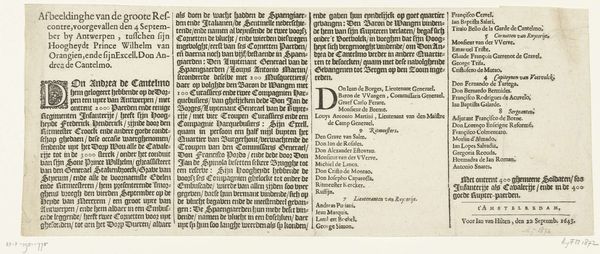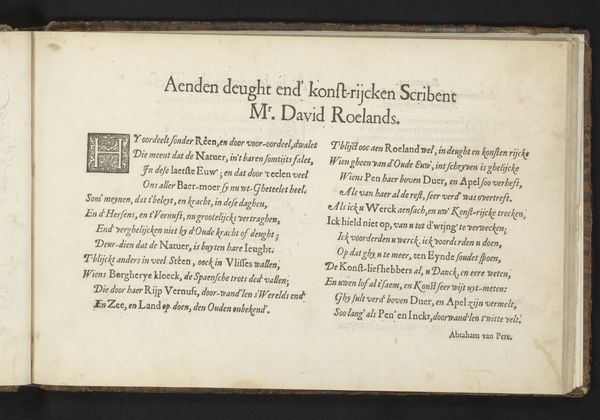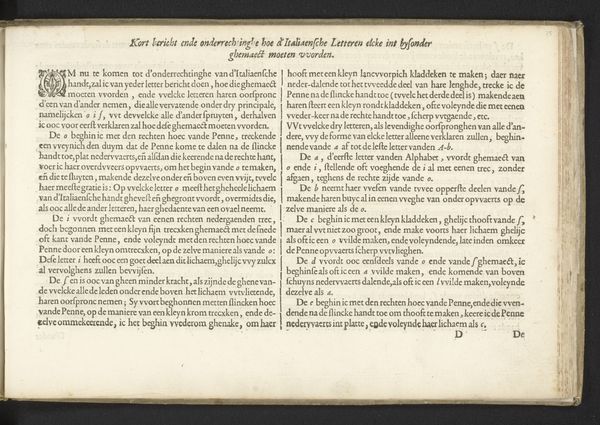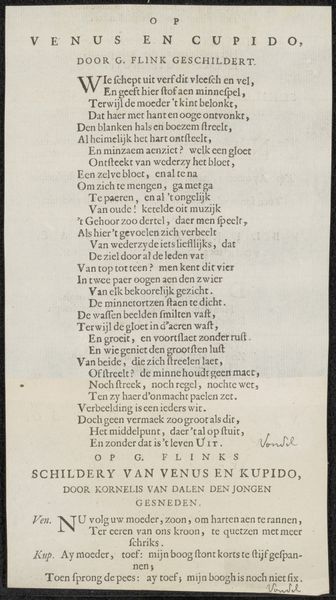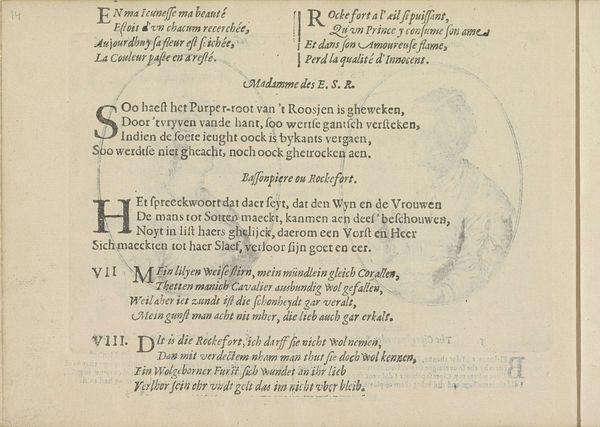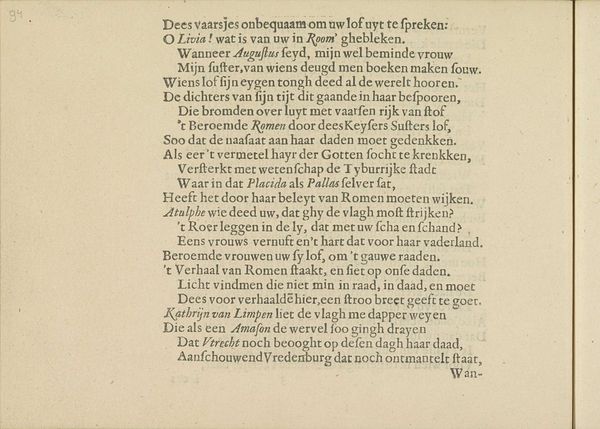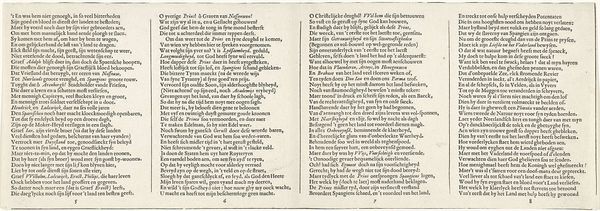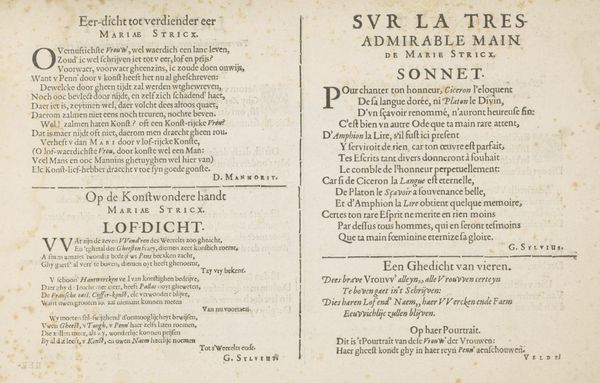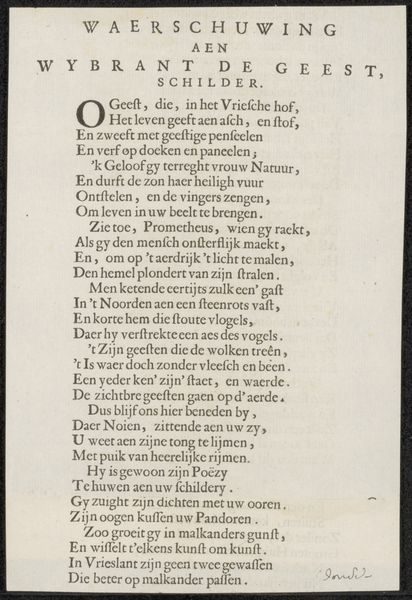
Tekstblad bij de prent van de vervolging der protestanten in Frankrijk na de herroeping van het Edict van Nantes, 1685-1686 1686 - 1699
0:00
0:00
print, engraving
#
narrative-art
#
baroque
# print
#
history-painting
#
engraving
Dimensions: height 113 mm, width 540 mm
Copyright: Rijks Museum: Open Domain
Curator: My eyes are immediately drawn to the script; it is almost decorative! Is this piece of ephemera a song sheet? Editor: The Rijksmuseum attributes this to Romeyn de Hooghe. What we’re viewing is an engraved text sheet intended to accompany a print depicting the persecution of Protestants in France after the revocation of the Edict of Nantes. It’s dated to between 1686 and 1699. Curator: So, this text would have amplified the impact of the visual imagery. The combination aimed to elicit a strong emotional response. What symbols do you spot? Editor: Well, consider its baroque origins. The ornate typography evokes that era—but I cannot pretend to understand any of it! My emotional response is just of historical interest! The visual weight seems almost purely… informative. Curator: Perhaps this work aimed to solidify the viewers’ existing worldview—a baroque piece reinforcing established beliefs and prejudices of the day. Editor: Maybe! The Dutch were quite upset about what happened in France. What a cultural and theological cataclysm. What’s this script, exactly? Curator: It’s an early form of Dutch. As for imagery, look beyond the script. Think of what it evokes… Consider the themes: religious conflict, state persecution. This sheet offered viewers a structured way to interpret those events and find meaning within their own faith. Editor: Right. But look how *dense* it is—visually overwhelming, honestly. I keep thinking of information overload; of polemics and conflict, translated into text that demands to be studied rather than enjoyed. That sounds very Protestant, actually! Curator: Precisely! It mirrors that period’s emphasis on individual scriptural interpretation, reflecting a wider societal trend toward the printed word. Even in such troubling times! Editor: Well, thank goodness that particular era of textual oppression is in the rearview mirror. Ahem! Anyway. Anything else strike you? Curator: What endures most is its implicit testimony. An age defined by violent conflicts and intellectual revolutions echoes—preserved, not in a grand history, but this modest engraving. Editor: Yes. Even mundane objects—texts, pamphlets, broadsides—hold fragments of feelings, attitudes, and historical understanding that bigger objects never will. Thank goodness for museums!
Comments
No comments
Be the first to comment and join the conversation on the ultimate creative platform.


